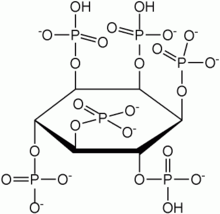Antinutrient

Antinutrients are natural or synthetic compounds that interfere with the absorption of nutrients.[1] Nutrition studies focus on those antinutrients commonly found in food sources and beverages.
Examples
Protease inhibitors are substances that inhibit the actions of trypsin, pepsin and other proteases in the gut, preventing the digestion and subsequent absorption of protein. For example, Bowman-Birk trypsin inhibitor is found in soybeans.[2]
Lipase inhibitors interfere with enzymes, such as human pancreatic lipase, that catalyze the hydrolysis of some lipids, including fats. For example, the anti-obesity drug orlistat causes a percentage of fat to pass through the digestive tract undigested.[3]
Amylase inhibitors prevent the action of enzymes that break the glycosidic bonds of starches and other complex carbohydrates, preventing the release of simple sugars and absorption by the body. Amylase inhibitors, like lipase inhibitors, have been used as a diet aide and obesity treatment. Amylase inhibitors are present in many types of beans; commercially available amylase inhibitors are extracted from white kidney beans.[4]
Phytic acid has a strong binding affinity to minerals such as calcium, magnesium, iron, copper, and zinc. This results in precipitation, making the minerals unavailable for absorption in the intestines.[5][6] Phytic acids are common in the hulls of nuts, seeds and grains.
Oxalic acid and oxalates are present in many plants, particularly in members of the spinach family. Oxalates bind to calcium and prevent its absorption in the human body.
Glucosinolates prevent the uptake of iodine, affecting the function of the thyroid and thus are considered goitrogens.[7] They are found in broccoli, brussel sprouts, cabbage and cauliflower.
Excessive intake of required nutrients can also result in them having an anti-nutrient action. Excessive intake of fiber can reduce the transit time through the intestines to such a degree that other nutrients cannot be absorbed. Because calcium, iron, zinc and magnesium share the same transporter within the intestine, excessive consumption of one of these minerals can lead to saturation of the transport system and reduced absorption of the other minerals.[8]
Some proteins can also be antinutrients, such as the trypsin inhibitors and lectins found in legumes.[9] These enzyme inhibitors interfere with digestion.
Another particularly widespread form of antinutrients are the flavonoids, which are a group of polyphenolic compounds that include tannins.[10] These compounds chelate metals such as iron and zinc and reduce the absorption of these nutrients, but they also inhibit digestive enzymes and may also precipitate proteins.
Saponins in plants may serve as anti-feedants.
Occurrence
Antinutrients are found at some level in almost all foods for a variety of reasons. However, their levels are reduced in modern crops, probably as an outcome of the process of domestication.[11] The possibility now exists to eliminate antinutrients entirely using genetic engineering; but, since these compounds may also have beneficial effects, such genetic modifications could make the foods more nutritious but not improve people's health.[12]
Many traditional methods of food preparation such as fermentation, cooking, and malting increase the nutritive quality of plant foods through reducing certain antinutrients such as phytic acid, polyphenols, and oxalic acid.[13] Such processing methods are widely used in societies where cereals and legumes form a major part of the diet.[14][15] An important example of such processing is the fermentation of cassava to produce cassava flour: this fermentation reduces the levels of both toxins and antinutrients in the tuber.[16]
See also
References
- ↑ Oxford Dictionary of Biochemistry and Molecular Biology. Oxford University Press, 2006. ISBN 0-19-852917-1.
- ↑ Tan-Wilson, Anna L.; Anna L. Tan-Wilson; Jean C. Chen; Michele C. Duggan; Cathy Chapman; R. Scott Obach; Karl A. Wilson (1987). "Soybean Bowman-Birk trypsin isoinhibitors: classification and report of a glycine-rich trypsin inhibitor class". J. Agric. Food Chem 35 (6): 974. doi:10.1021/jf00078a028.
- ↑ Heck, AM; Amy M. Heck; Jack A. Yanovski; Karim Anton Calis (Mar 2000). "Orlistat, a New Lipase Inhibitor for the Management of Obesity". Pharmacotherapy 20 (3): 270–9. doi:10.1592/phco.20.4.270.34882. PMID 10730683.
- ↑ Preuss, HG; Preuss HG (Jun 2009). "Bean amylase inhibitor and other carbohydrate absorption blockers: effects on diabesity and general health". J Am Coll Nutr. 28 (3): 266–76. doi:10.1080/07315724.2009.10719781. PMID 20150600.
- ↑ Ekholm, Päivi; Päivi Ekholm; Liisa Virkki; Maija Ylinen; Liisa Johansson (Feb 2003). "The effect of phytic acid and some natural chelating agents on the solubility of mineral elements in oat bran". Food Chemistry 80 (2): 165–70. doi:10.1016/S0308-8146(02)00249-2.
- ↑ Cheryan, Munir; Rackis, Joseph (1980). "Phytic acid interactions in food systems". Crit Rev Food Sci Nutr 13 (4): 297–335. doi:10.1080/10408398009527293. PMID 7002470.
- ↑ "Glucosinolates (Goitrogenic Glycosides)". Cornell University: Department of Animal Science.
- ↑ Nutrition: A Functional Approach, Canadian Edition. Pearson Benjamin Cummings. 2007.
- ↑ Gilani GS, Cockell KA, Sepehr E (2005). "Effects of antinutritional factors on protein digestibility and amino acid availability in foods". J AOAC Int 88 (3): 967–87. PMID 16001874.
- ↑ Beecher GR (October 2003). "Overview of dietary flavonoids: nomenclature, occurrence and intake". J. Nutr. 133 (10): 3248S–54S. PMID 14519822.
- ↑ GEO-PIE Project. "Plant Toxins and Antinutrients". Cornell University.
- ↑ Welch RM, Graham RD (February 2004). "Breeding for micronutrients in staple food crops from a human nutrition perspective". J. Exp. Bot. 55 (396): 353–64. doi:10.1093/jxb/erh064. PMID 14739261.
- ↑ Hotz C, Gibson RS (April 2007). "Traditional food-processing and preparation practices to enhance the bioavailability of micronutrients in plant-based diets". J. Nutr. 137 (4): 1097–100. PMID 17374686.
- ↑ Chavan JK, Kadam SS (1989). "Nutritional improvement of cereals by fermentation". Crit Rev Food Sci Nutr 28 (5): 349–400. doi:10.1080/10408398909527507. PMID 2692608.
- ↑ Phillips RD (November 1993). "Starchy legumes in human nutrition, health and culture". Plant Foods Hum Nutr 44 (3): 195–211. doi:10.1007/BF01088314. PMID 8295859.
- ↑ Oboh G, Oladunmoye MK (2007). "Biochemical changes in micro-fungi fermented cassava flour produced from low- and medium-cyanide variety of cassava tubers". Nutr Health 18 (4): 355–67. doi:10.1177/026010600701800405. PMID 18087867.
Further reading
- Shahidi, Fereidoon (1997). Antinutrients and phytochemicals in food. Columbus, OH: American Chemical Society. ISBN 0-8412-3498-1.